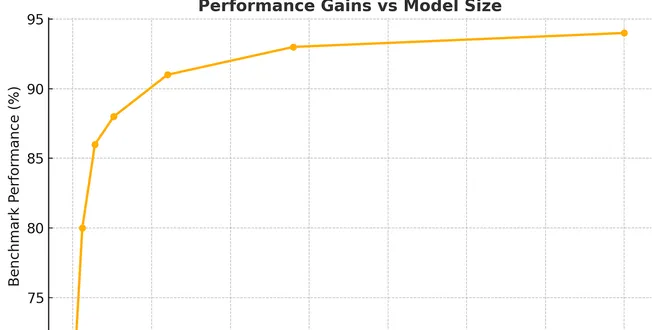small language models
Small Language Models (SLMs) are a new class of AI models designed to operate efficiently on standard hardware, making them accessible for a wider range of applications. Unlike their larger counterparts, which can have tens of billions to trillions of parameters, SLMs typically range from a few million to a few billion parameters. This compact size allows them to run on devices such as smartphones and IoT sensors, making them ideal for edge computing. SLMs are not only cost-effective but also often outperform larger models in specialized tasks, providing tailored solutions for various business needs and applications.

Small Language Models
If you are not a Medium member, you can read this article here . Large language models have become very popular recently due to the amazing capabilities shown by these models. Their applicability to a...
📚 Read more at Towards AI🔎 Find similar documents

Why Small Language Models Make Business Sense
Image generated by Gemini AI Small Language Models are changing the way businesses implement AI by providing solutions that operate efficiently using standard hardware. Despite the attention given to ...
📚 Read more at Towards AI🔎 Find similar documents

Exploring the Power of Small Language Models
AI Generated In the rapidly evolving landscape of Artificial Intelligence, Large Language Models (LLMs) have captivated the public imagination with their remarkable capabilities in understanding and g...
📚 Read more at Towards AI🔎 Find similar documents

Your Company Needs Small Language Models
Image generated by Stable Diffusion When specialized models outperform general-purpose models “Bigger is always better” — this principle is deeply rooted in the AI world. Every month, larger models ar...
📚 Read more at Towards Data Science🔎 Find similar documents

Small Language Models (SLMs): A Practical Guide to Architecture and Deployment
SLM visual showcase with points. (Image Generated By OpenAI) I. Introduction Small Language Models (SLMs) are reshaping how we think about AI efficiency. Unlike their massive counterparts — think GPT-...
📚 Read more at Towards AI🔎 Find similar documents

It is raining Language Models! All about the new Small Language Models — Phi-2
It is raining Language Models! All about the new Small Language Model— Phi-2 The Dawn of Small Language Models: Introducing Phi-2 that outperformed Llama-2(70B), which is 25 times its size! Image by ...
📚 Read more at Towards AI🔎 Find similar documents

Small Language Models (SLMs) in Enterprise: A Focused Approach to AI
One size does not fit all. Large language models (LLMs) like GPT-4 have certainly grabbed headlines with their broad knowledge and versatility. Yet, there’s a growing sense that sometimes, bigger isn...
📚 Read more at Towards AI🔎 Find similar documents

Why Small Language Models Are Taking Over Agentic AI
Their research suggests a radical shift: small language models (SLMs) — models with fewer than 10 billion parameters — are not only sufficient for most agent tasks, but are actually better suited for ...
📚 Read more at Towards AI🔎 Find similar documents

Small Language Models are the Future of Agentic AI
This article provides a summary of and commentary on the recent paper
📚 Read more at MachineLearningMastery.com🔎 Find similar documents

Why Smaller Models Are the Future: Inside the Quiet Revolution of SLMs?
“We’re ditching the giant model for a lighter one-that’s our production push,” he said, opening his laptop in a meeting room at the offices of a startup in Milwaukee. And just like that, I saw it: may...
📚 Read more at Towards AI🔎 Find similar documents

Some Technical Notes About Phi-3: Microsoft’s Marquee Small Language Model
The model ius able to outperform much larger alternatives and now run locally on mobile devices. Created Using Ideogram I recently started an AI-focused educational newsletter, that already has over ...
📚 Read more at Towards AI🔎 Find similar documents

Not-So-Large Language Models: Good Data Overthrows the Goliath
(Image generated by DALL·E) How to make a million-sized language model that tops a billion-size one In this article, we will see how Language Models (LM) can focus on better data and training strategi...
📚 Read more at Towards Data Science🔎 Find similar documents

